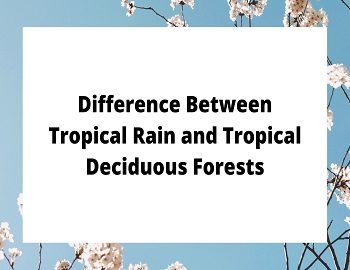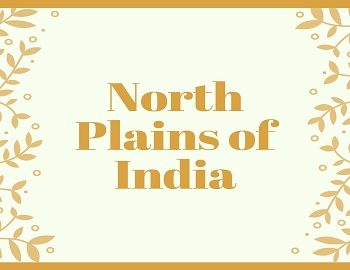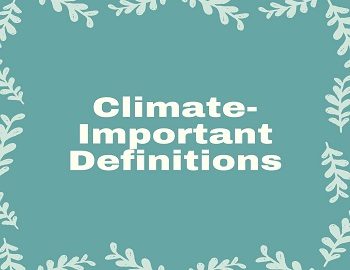Table of Contents
What is Wetland?
- A wetland is an ecosystem in which the land surface is saturated or is covered with standing water for a part of the year.
- In other words, a wetland is an area of land which is permanently or periodically saturated with water and exists as a distinct ecosystem.
- Wetlands play many roles in the environment, such as water purification, flood control, carbon sink, and shoreline stability.
- Wetlands can be freshwater, brackish, or saltwater.
- Examples of aquatic vegetation that thrive in wetlands are milkweed, bald cypress trees, mangroves, and cattails.
- Worldwide most extensive wetlands are in Arctic Tundra.
Types of Wetlands:
- Swamps– Wetlands with trees.
- Marshes– Wetlands without trees.
Water in marshes and swamps is shallow enough to allow full penetration of sunlight, therefore photosynthetic activity is high.
- Bogs and Fenns– Waterlogged areas saturated by groundwater or rainwater. Bogs are generally developed where drainage is blocked due to a combination of Anaerobic conditions of low temperature, biological activity is slowed down and organic matter is only partially decomposed to form ‘peat’ which releases humic acid that tinges water brown.
Importance of Wetlands:
Flood Control:
Among the many vital functions of wetlands, flood control is one of the most important. Wetlands act like sponges, storing and slowly releasing rainfall and runoff, thus reducing flood peak. This can reduce the need for expensive dams and other engineering structures.
Biodiversity:
Wetlands are known for their enormous biodiversity and are breeding
grounds for many species.
Binding Effect of their Vegetation:
The binding effect of their vegetation is another important aspect of wetlands; it helps in the stabilization of banks and shores.
It also helps in the accretion of sediment, thus counteracting forces of erosion, subsidence, and sea-level rise.
Groundwater Recharge:
Wetlands have a further key role to play in what is known as groundwater recharge and discharge Recharge occurs when water moves from the wetland into the underground aquifer- rock, such as sandstone, which holds water. The wetland acts as a filter for certain kinds of waste and soluble contaminants. The process is important for controlling stormwater run-off for replenishing supplies of water for human consumption and also in maintaining the flow of groundwater which may support other wetlands at the point of discharge. Discharge of wetland stored groundwater may be important in sustaining the agricultural production of surrounding land.
Carbon Sinks:
The vegetation of wetlands also absorbs a good amount of CO2 generated by human activities. Thereby wetlands act as lungs of the earth.
Prevent Eutrophication:
Wetlands can act as a ‘sink’, preventing nitrate build-up which could lead to eutrophication. It prevents nitrates from reaching freshwater streams and lakes. Nitrate run-off from fertilized agricultural areas can be recycled to harmless nitrogen gas by this mechanism.
The Ramsar Convention:
The convention on Wetlands of International Importance especially as Waterfowl habitat often known as the Ramsar Convention from its place of adoption in Iran in 1971.
It is an intergovernmental treaty which provides the framework for international cooperation for the conservation of wetlands.
37 sites in India are under the Convention of Wetlands of International Importance.
Ramsar Sites in India:
| Ramsar Site | Location |
|---|---|
| Chilika Lake (1981) (Chilika Lake was designated the first Indian wetland of international importance under the Ramsar Convention; this brackish lake has a rich birdlife) | Orissa |
| Keoladeo National Park (1981) (only wintering site in India for Siberian cranes) | Rajasthan |
| Harike Wetland (1990) | Punjab |
| Wular Lake (1990) ( largest freshwater lake in India) | Jammu and Kashmir |
| Loktak Lake (1990) (the Keibul Lamjao is a unique floating national park in the world floats over it and the only home of the endangered Manipur brow-antlered deer) | Manipur |
| Sambhar Lake (1990) (India’s largest inland saltwater lake and is important for a variety of wintering water birds like pelicans and flamingos) | Rajasthan |
| Kanjli Wetland (2002) | Punjab |
| Ropar Wetland (2002) | Punjab |
| Ashtamudi Wetland (2002) | Kerala |
| Bhoj Wetland (2002) | Madhya Pradesh |
| Tsomoriri (2002) | Ladakh |
| Point Calimere Wildlife and Bird Sanctuary (2002) | Tamil Nadu |
| Pong Dam Lake (2002) | Himachal Pradesh |
| Vembanad-Kol Wetland (2002) | Kerala |
| Sasthamkotta Lake (2002) | Kerala |
| Bhitarkanika Mangroves (2002) | Odisha |
| Deepor Beel (2002) | Assam |
| East Kolkata Wetlands (2002) | West Bengal |
| Kolleru Lake (2002) (it provides habitat for the vulnerable grey pelican) | Andhra Pradesh |
| Renuka Lake (2005) | Himachal Pradesh |
| Chandra Taal (2005) | Himachal Pradesh |
| Upper Ganga River (Brijghat to Narora Stretch) (2005) | Uttar Pradesh |
| Surinsar-Mansar Lakes (2005) | Jammu and Kashmir |
| Hokera Wetland (2005) | Jammu and Kashmir |
| Rudrasagar Lake (2005) | Tripura |
| Nalsarovar Bird Sanctuary (2012) | Gujarat |
| Sundarban Wetland (2019) | West Bengal |
| Nandur Madhameshwar (2019) | Maharashtra |
| Nawabganj Bird Sanctuary (2019) | Uttar Pradesh |
| Sarsai Nawar Jheel (2019) | Uttar Pradesh |
| Keshopur-Miani Community Reserve (2019) | Punjab |
| Nangal Wildlife Sanctuary (2019) | Punjab |
| Beas Conservation Reserve | Punjab |
| Sandi Bird Sanctuary (2019) | Uttar Pradesh |
| Samaspur Bird Sanctuary (2019) | Uttar Pradesh |
| Parvati Aranga Bird Sanctuary (2019) | Uttar Pradesh |
| Saman Bird Sanctuary (2019) | Uttar Pradesh |









Comments (No)